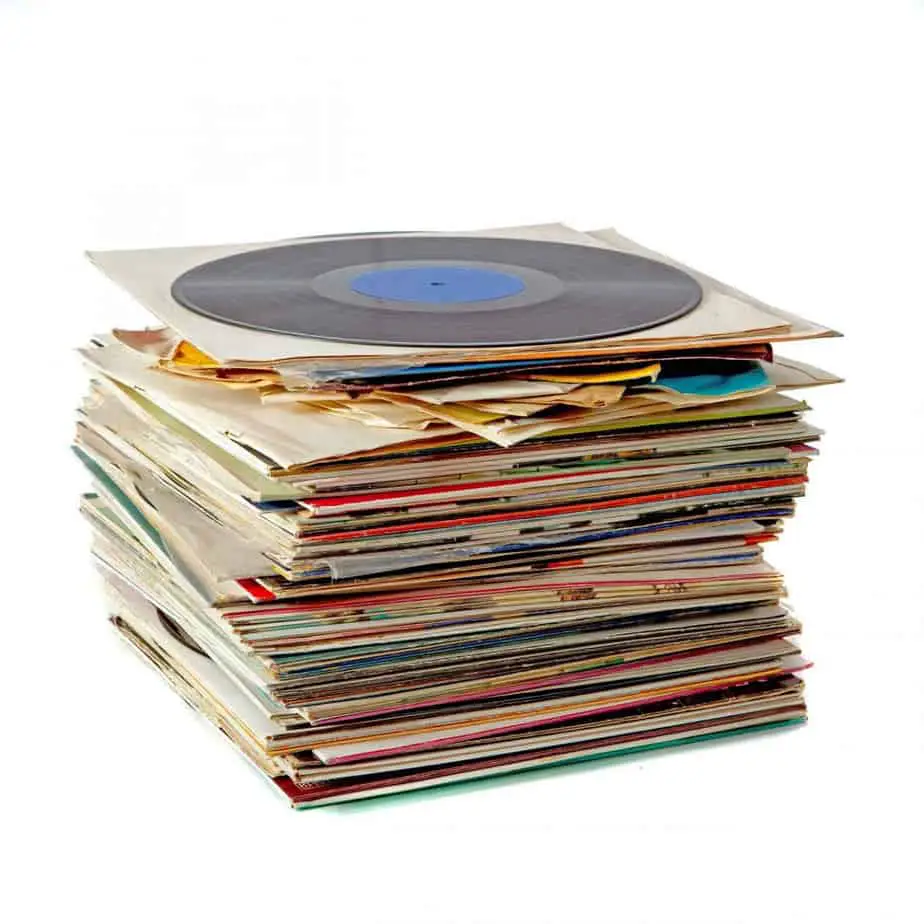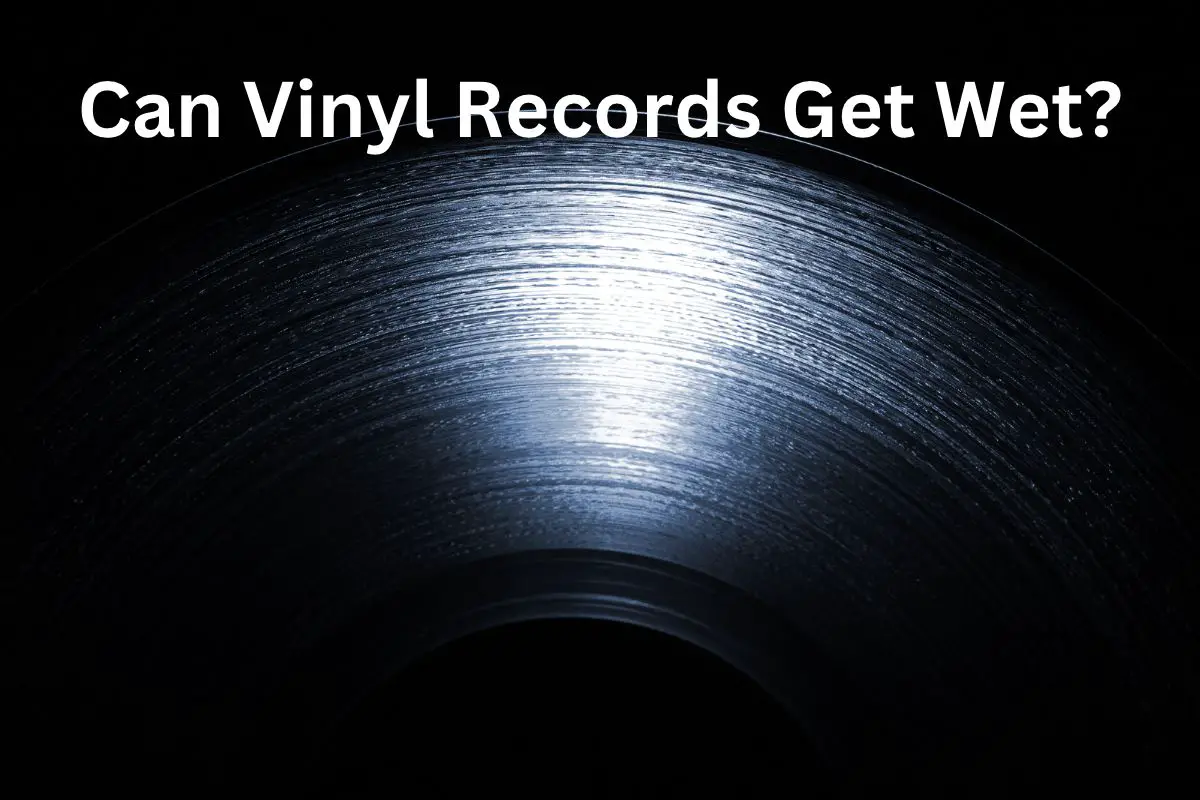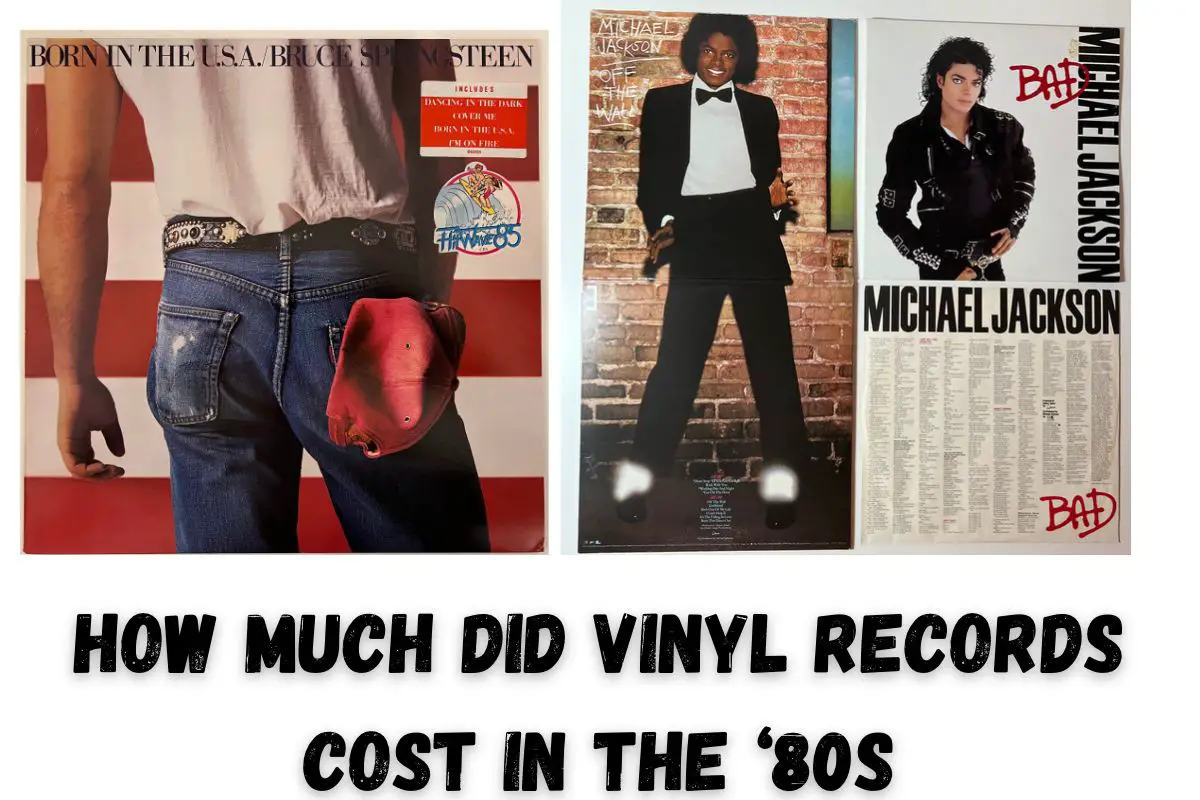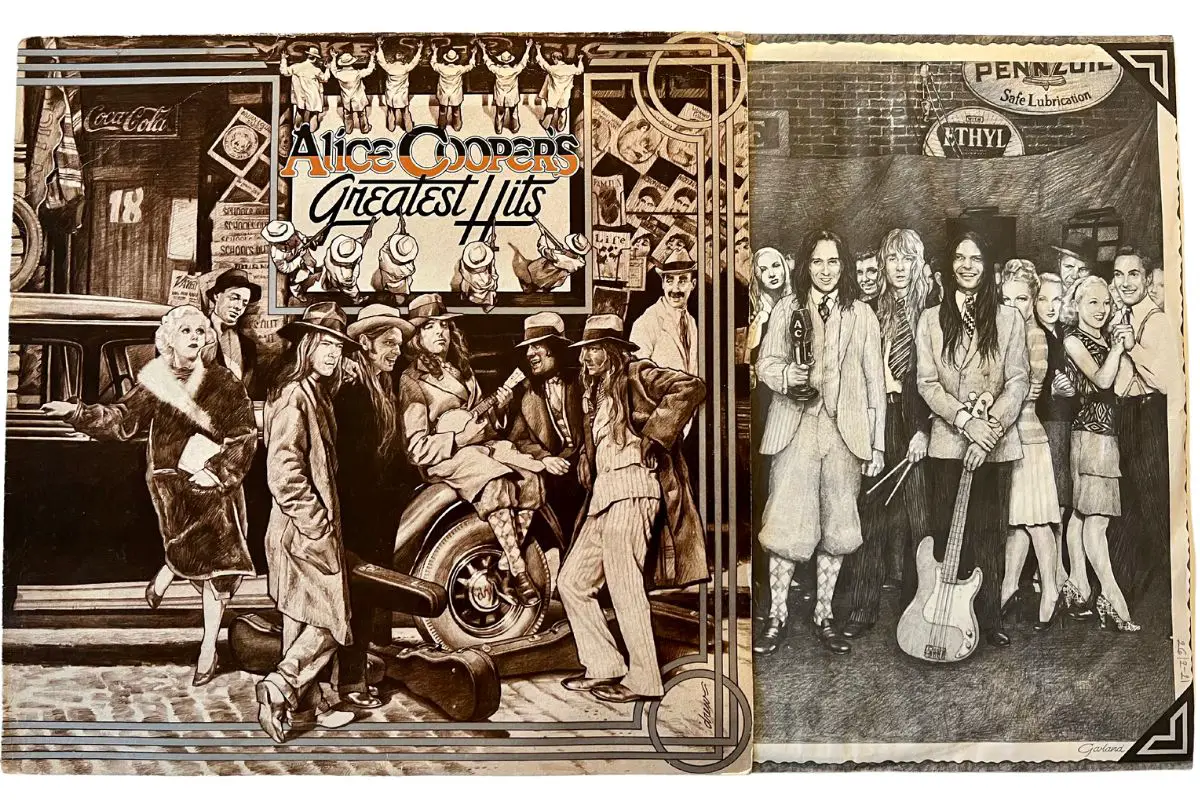This post contains affiliate links.
Storage is one of the routine maintenance practices for your vinyl records; the way they are stored directly affects their functionality and life shell (2).
You should never stack your vinyl records horizontally because stacking them on each other causes scratches and warping the records over time.
This article will discuss the difference between vertical and horizontal storage, why you should not store records horizontally, why they should be stored vertically, and how to keep your vinyl records.
Table of Contents
Can Records Be Stored Horizontally? – Vertical Or Horizontal Storage?
Vertical storage style has always been the best record storage practice, while horizontal storage style damages records over time.
The storage style of your records matters a lot; they determine the life shell of your vinyl records and their sound quality.
If you are storing less than five records, then you can try the flat storage style. If you own more than five records, make sure to keep them vertically. In my experience, The weight on the vinyl records at the bottom of a horizontal storage style causes many damages.
There are many reasons you should always consider vertical storage style, from saving the vinyl records from bearing unnecessary weight to avoiding warping or mishappening of your vinyl records and crack.
Dangers Of Horizontal Storage Of Vinyl Records
There are a lot of dangers attached to storing your records horizontally. They are not risks or probable outcomes but direct and definite consequences of holding records horizontally, which I have encountered in the world of vinyl collection. Here’s some of them:
- Warping – When you stack your records on top of each other, distortion is inevitable. Warping means your vinyl records will start to bend to the weight and become deformed, taking another shape entirely. Warping can cause your vinyl record to become unplayable permanently; it will no longer be flat but have a bowl-like form, which definitely cannot be played. Many record owners have tried flattening it out again (1), but there is only a slim chance of that working out, and in the end, you might have to throw it out.
- Skipping – In some rare cases where warping has not started yet, cutting takes place. The weight applied to your vinyl records will cause them to miss while playing them when they have endured the weight for too long. While playing, some parts might get cut off or not play at all; this is caused by applying weight on your vinyl records.
- Scratch from Pressure – The pressure generated from the weight on the records at the bottom of the stack is high, and your vinyl records cannot hold pressure. They are fragile materials that cannot withstand too much pressure on them. This pressure ultimately begins to cause scratches on the vinyl records, which continue to get deeper until they are no longer playable. Scratches happen when your vinyl records are in sleeves; by forcing them out from under the stacks. Therefore, the sleeves that are supposed to protect them from scratches cannot do their jobs but damage the records because of their storage conditions.
- Heat Generation – Storing your records on each other does not allow air to go in between them to keep them aerated. Getting oxygen is also essential for your vinyl records because heat causes them to be damp, and this is also a perfect condition for molds to grow. When the heat gets too much, moisture accumulates, causing mildew growth and rendering them unplayable.
- Cracking – The worst thing that can happen to your vinyl records is getting snapped. Cracking often occurs when you store your vinyl records horizontally, especially on an unstable surface. They crack easily from the pressure, and sometimes when you are pulling them out.
Why Is Vertical Storage The Best?
There are several reasons why vertical storage of your vinyl records is the best for you. Below is just a few:
- When you store your records vertically, you do not need to worry about warping because there is no pressure on them, and nothing can make them bend. They remain flat and always ready to be played.
- There will no longer be any weight on them, and this means no scratches. There will be no force to pull out a record since they are not stacked anymore. Your record sleeves can do their jobs of protecting the vinyl records from getting scratched and won’t damage them either.
- Elimination of mold growth due to proper aeration between your records occurs. They now get a fair and adequate air supply, no more dampness or moisture accumulation that grows mold.
- There is no risk of getting cracked or broken anymore, and this can only now occur when you are handling them, but not while in storage.
- This storage improves your vinyl record’s shelf life; they can be stored vertically for years without damage. They will not depreciate or sound quality because they are correctly stored.
How To Store Your Vinyl Records
Proper storage of your records goes beyond horizontal or vertical storage styles; you must take several steps for an adequate repository for fragile vinyl records (3). I have broken them down into five quick and easy steps:
- After playing your record, the first thing to do is to clean your vinyl record. Cleaning can be done with vinegar and distilled water solution, cleaning the vinyl record properly, rinsing out the mixture, and drying the vinyl records. There are other cleaning methods, but ensure that you follow one of them appropriately, using the correct tools and measurements. Improvising some of them might cause severe damage to your records.
- After cleaning them and drying them correctly, make sure you put your records back in their sleeves. Your vinyl records must always be in their sleeves, except you are playing them at the moment. Keeping them in their sleeves prevents the accumulation of dust and dirt on them, another risk factor to vinyl health. Sleeves save your records from getting scratched or cracked by mistake due to bad handling.
- Your records must be in vertical positions; this means they should be upright in their shelves or boxes. To avoid warping, skipping, cracking, and other damages to them, you have to store them vertically.
- Never store your vinyl records horizontally for any reason, the risks are way too much to deal with, and some are permanent and cannot be fixed or reversed. Frequently you might not get those vintage records anymore, so ensure to treat them nicely to avoid damages.
- Play your records the right way. Do not directly touch the surface of your records; handle them by the edge only. Skimming the surface of your record can cause scratch or transfer of oils to them, which affects your sound quality. Always wait for your song to come on, do not handle the needle while playing to search for songs; this can cause severe damage when placed on the wrong grooves.
Frequently Asked Questions (FAQ)
Can I Store Less Than 20 Records Horizontally?
The best storage practice is the vertical style, and to be on the safe side, make sure you store your records in a secure manner irrespective of the number of records.
It should not matter how many records you have before following the best storage guideline. Store your record vertically only, do not let them get stacked on each other because there will be adverse effects over time, and they might not be reversible.
How Long Can I Store Records Vertically?
There is no time limit for vertical storage; you can store your records uprightly forever.
Vertical storage keeps your records fresh for as long as you have them; you can store them vertically for as long as you want. Ensure they are in a place with the right amount of air, free from external risk factors, and carefully handled when you want to play them. Doing this protects them for as long as you own them.
How Long Does It Take For Records To Get Warped?
Warping takes a very long time, but it can take less than a month when there is a heat source or improper aeration from lousy storage.
Warping from horizontal storage is a very long process, but it occurs fast when a heat source is applied to the record or generated from the inadequate air supply. Store your records vertically, away from the heat source, and ensure an adequate supply of air.
Summary
Vinyl records can be stored horizontally, but they come with substantial risk factors when they become a long-time habit and when the records are more than five. Vertical storage poses no threats irrespective of the number of records. If you have further questions, kindly leave a comment below.
Sources
- McCrigler, Brittany, et al. “How to Repair a Warped LP Record.” iFixit, 2014, https://www.ifixit.com/ Accessed 13 July 2021.
- Rigby, Paul. “How to store your record collection in 8 steps.” The Vinyl Factory, 2015, https://thevinylfactory.com/ Accessed 13 July 2021.
- Storage, Life. “5 Best Practices You Need to Learn about Record Storage.” LifeStorage, 2017, https://www.lifestorage.com/ Accessed 13 July 2021.
VacationVinyl.com is a participant in the Amazon Services LLC Associates Program, an affiliate advertising program designed to provide a means for sites to earn advertising fees by advertising and linking to Amazon.com. We also participate in other affiliate programs which compensate us for referring traffic.




